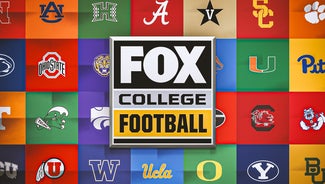
Big Ten teams struggle with lack of chances to impress selection committee
MADISON, Wis. — Because a 60-degree February day in southern Wisconsin wasn’t perplexing enough, a basketball riddle: If two first-place teams in the Big Ten play, does it make a sound in the NCAA tournament selection committee hotel rooms?
“I don’t worry about how a committee views anything,” said Greg Gard, shortly after his Wisconsin Badgers clipped Maryland 71–60 at the Kohl Center to remain tied atop the Big Ten standings with Purdue. “I can’t control it. So I don’t lose any sleep over anything I don’t have control over. That was a heck of a college basketball game—that’s what I hope people appreciate, not fast-forwarding always to what’s going to happen in the selection room or what’s going to happen in March.”
He didn’t raise his voice or appear agitated. Wisconsin’s head coach simply staked out a very reasonable position. Unfortunately for Gard, the NCAA had installed a trap door under that position two weeks ago. A tournament preview show debuted and effectively guaranteed that all conversation about February would concern March. And the absence of any Big Ten teams from the top 16 seeds certainly ensured that discussion about the league would revolve around its value to those who fill out the bracket for real, and not just for office pools.

So when a pair of Big Ten contenders meet, it’s fair to wonder just what it will be worth. Normally that answer would be self-evident: A lot. Except not a single team from the conference was deemed worthy of even a No. 4 seed in that preview show on Feb. 11. But once the anger over the snub subsided, a legitimate dilemma took its place: The challenge of changing the committee’s mind when that committee doesn’t think the teams you’ll play are all that terrific.
The selection committee evaluated the Big Ten and yawned. And Big Ten contenders seeking to build an eye-catching résumé have only Big Ten teams left on the schedule. So Wisconsin and Maryland met Sunday to try to keep pace in pursuit of a conference championship. What else they’d get out of it was less clear.
It’s hard to argue that the committee is wrong. The Big Ten ranks fourth in conference RPI and is suffering from relatively lean years for some bellwether programs. (Injury-wracked Michigan State and Indiana have 23 combined losses, and an Ohio State program that has won double-digit league games for 11 straight years is 5–10 in conference play.). There’s also an oversaturation of middling teams: The bottom seven clubs were a combined six games over .500 entering Sunday. Six teams ranked between 52nd and 91st in the RPI, and between 45th and 80th on kenpom.com.

As of Sunday morning, the Big Ten had four teams in the kenpom.com top 30, none in the top 10. The ACC and Big 12 boasted three teams apiece in that top 10 alone. The league’s standard-bearers don’t impress the computers or the naked eye, at least not consistently. (If you believe individual talent makes teams and leagues great, the Big Ten probably features two players—Purdue’s Caleb Swanigan and Wisconsin’s Ethan Happ—in the mix for All-America consideration. It seems like a steep drop-off after that.)
All of which stifles upward mobility. In theory, Maryland and Wisconsin automatically gave each other a strength-of-schedule lift by virtue of the standings. The Badgers came away with an RPI top-20 win. Everyone sang everyone else’s praises.
“We’re pretty good,” Maryland coach Mark Turgeon said. “We’ll be all right. We’ll regroup. But it was their day. It was Wisconsin’s day.”
“Mark’s got a heck of a team,” Gard said. “When I saw them back in November, I knew what he was talking about, that they were going to be pretty good.”

On the one hand, Maryland put together a fine first-half road effort (minus the 10 turnovers before intermission), Wisconsin authored a stirring second-half comeback and it seemed a fine way to spend a couple hours on a Sunday. On the other hand? Two of the best teams in the Big Ten combined for 48 fouls and 25 missed free throws. For a while it appeared as though Melo Trimble might carry the Terrapins yet again after posting a career-high 32 points at Northwestern four days earlier; it turns out Maryland had the junior guard’s 27 points and virtually nothing else going for it. Trimble’s nine field goals matched the combined total for every other Maryland player who stepped on the floor.
Wisconsin could claim optimism, especially after two losses in a row, and especially after senior guard Bronson Koenig scored nine points in a reserve role while on his way back from a calf strain. Victory alone was needed and reinvigorating. “That’s why we dropped the last two—we haven’t matched or exceeded the sense of urgency other teams are playing with,” forward Nigel Hayes said, after taking the initiative on demonstrating some resolve with a team-high 21 points and 10 rebounds against Maryland. “We finally have that sense of urgency on our own end.”
And yet: The Badgers shot 28% in the first half, its blemishes on full display. (Gard sized up his team’s continued free throw woes—the Badgers shot 56.8% from the line Sunday—honestly and hilariously. “Pretty soon we’re going to look like the locker room from Major League—we’re going to have the candles and oils and garlic around our neck,” he said.) For both sides, it was a grueling, choppy outing without any semblance of flow by the end. This is what two Big Ten frontrunners could offer when everyone was watching. Competitive? No doubt. Convincing? Not so much.
It’s dangerous to extrapolate meaning from one outing, but that’s what the NCAA assured we’d do by staging a preview show—and, moreover, by omitting the Big Ten during it.
“Appreciate the game for what it was,” Gard said after Sunday’s showdown in Madison, “because it was a really good game between two pretty good teams.”
The top teams of the Big Ten surely want to improve their respective NCAA tournament stations. The problem is the Big Ten, stumbling in their way.






































































































































